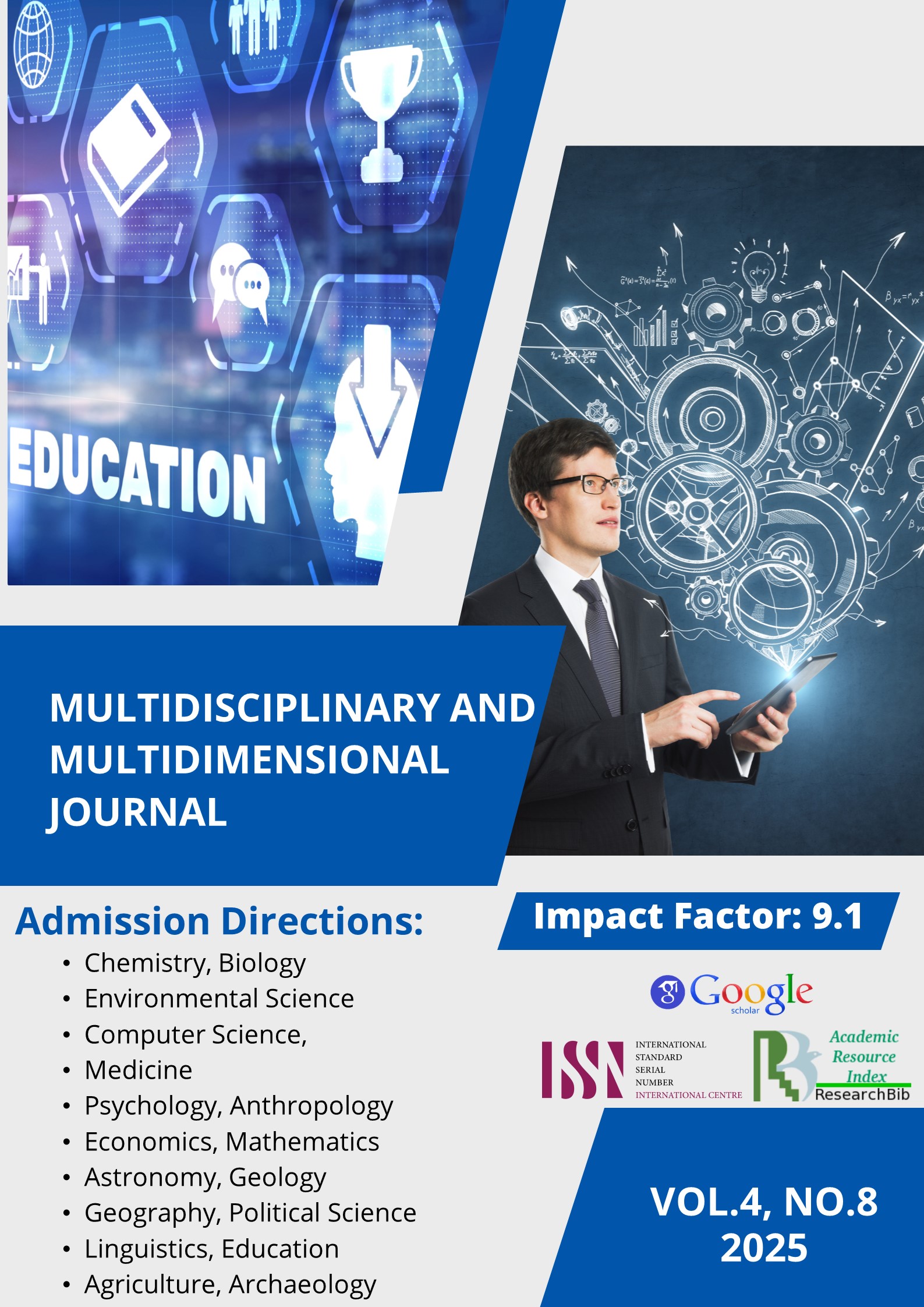IMPROVING THE METHODOLOGY FOR DEVELOPING A SENSE OF PATRIOTISM IN STUDENTS THROUGH MATERIALS RELATED TO ARCHITECTURAL MONUMENTS (based on the example of architecture in the Turkestan region during the late 18th to early 19th centuries)
Keywords:
educational methodology,, architectural heritage,, Patriotism, Turkestan region,, cultural identity,, historical monuments,Abstract
This article explores the potential of architectural heritage as an educational tool for fostering patriotism among students. Using architectural monuments of the Turkestan region from the late 18th to early 19th centuries as a core content source, it examines methodological approaches to integrating this historical-cultural material into educational practices. The research proposes improved strategies for curriculum development and classroom activities that deepen students’ emotional and intellectual connections to national identity and cultural pride.
References
Smith, L. (2016). Uses of Heritage. 2nd edition. London: Routledge.
DOI: 10.4324/9781315723610
Schofield, J. (2015). Heritage, Community, and Archaeology. London: Bloomsbury Academic.
ISBN: 978-1472528139
UNESCO. (2017). World Heritage and Education: Engaging young people in heritage. Paris: UNESCO Publishing.
https://unesdoc.unesco.org/ark:/48223/pf0000247437
Logan, W., Craith, M. N., & Kockel, U. (2016). A Companion to Heritage Studies. Chichester: Wiley-Blackwell.
ISBN: 978-1118486634
Ashworth, G. J., Graham, B., & Tunbridge, J. E. (2019). Pluralising Pasts: Heritage, Identity and Place in Multicultural Societies. London: Pluto Press.
DOI: 10.2307/j.ctt1hfr0rt
Hobsbawm, E., & Ranger, T. (2015). The Invention of Tradition. Cambridge: Cambridge University Press.
(Though originally published in 1983, this edition has updated commentary relevant for heritage studies.)
Barthel-Bouchier, D. (2017). Cultural Heritage and the Challenge of Sustainability. New York: Routledge.
DOI: 10.4324/9781315814936











